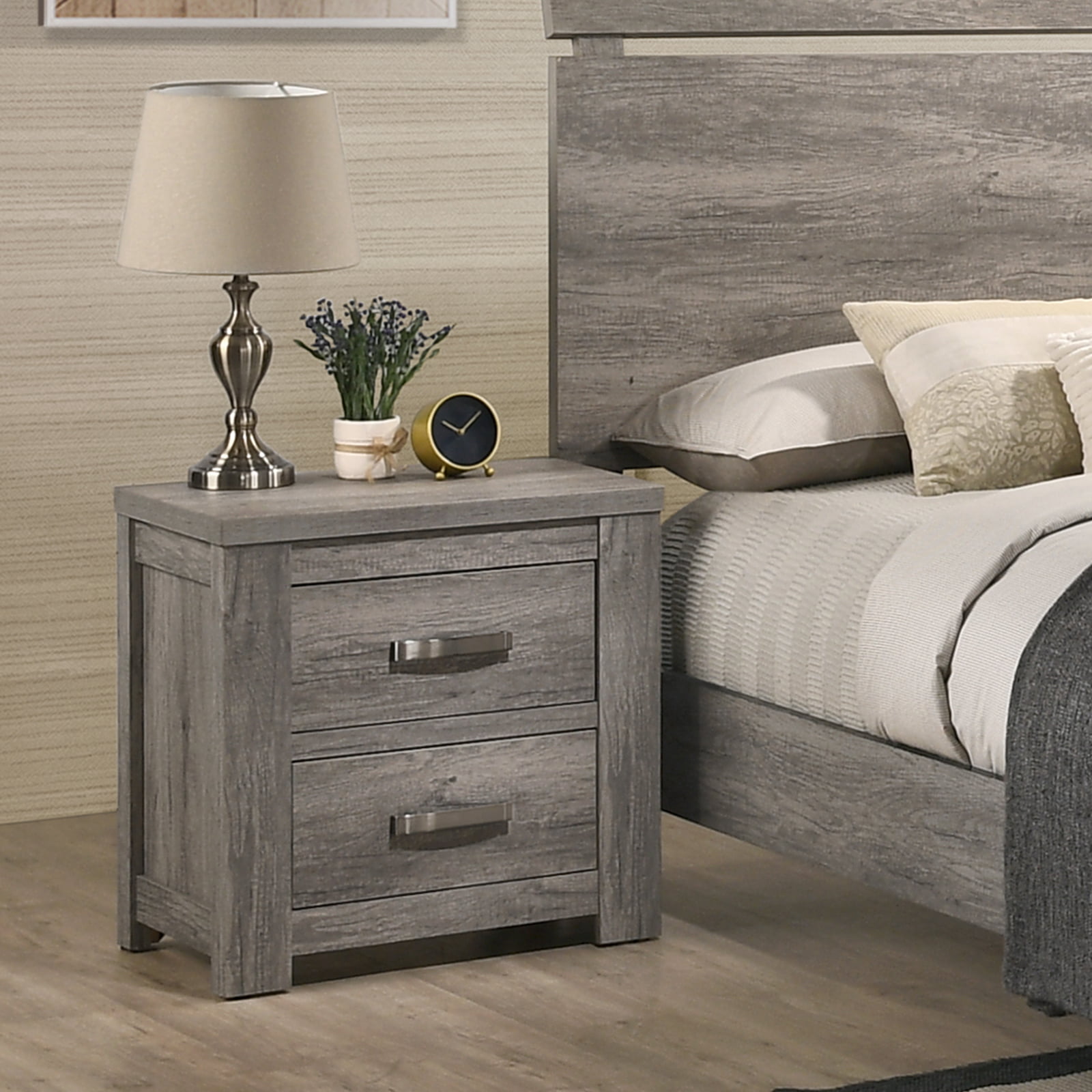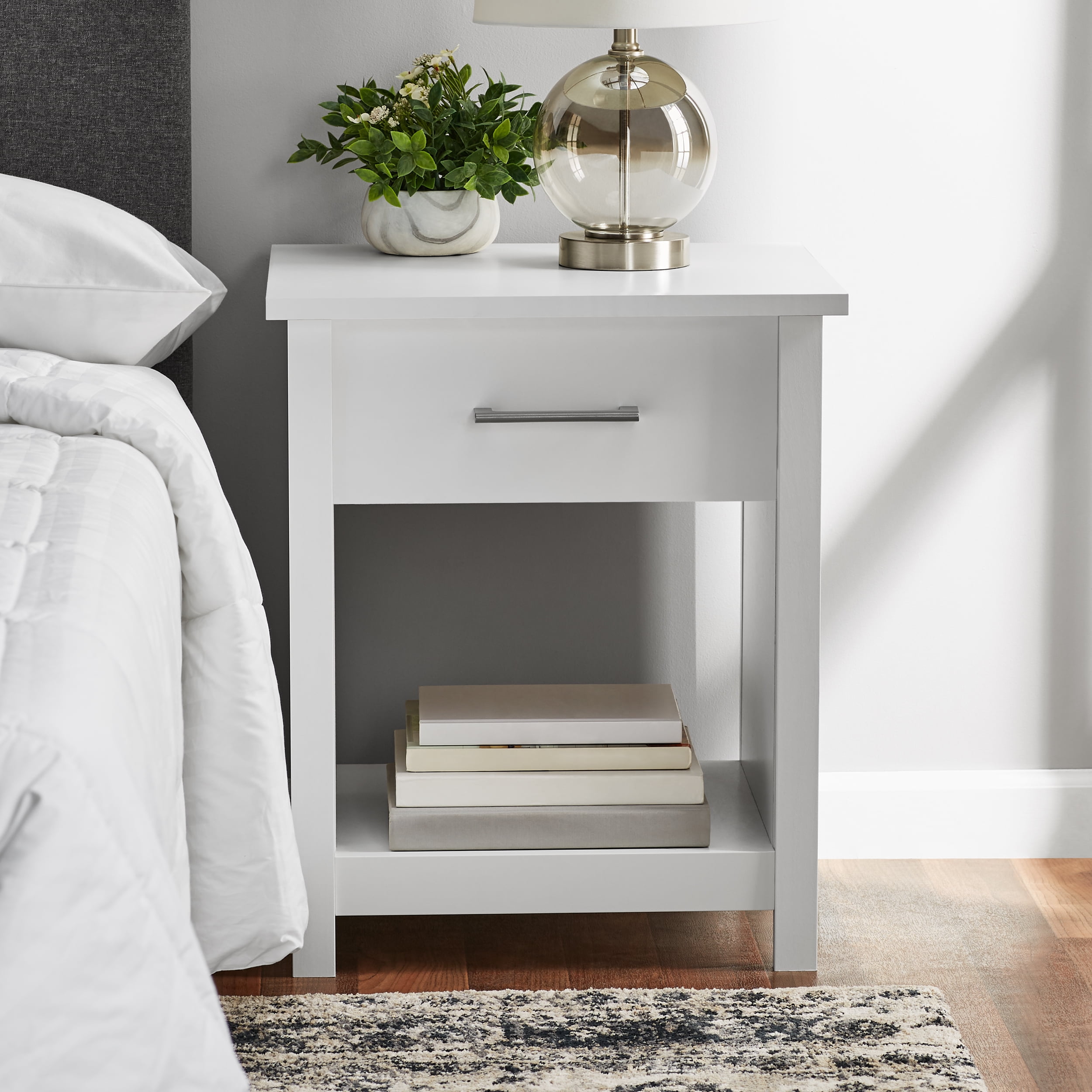Chair-Side Table Functionality

A chair-side table, often referred to as a nightstand, is a staple in many bedrooms and living spaces, serving as a convenient and practical surface for a variety of purposes. Its primary function is to provide a readily accessible platform for items needed within reach of a seated person, particularly those used during relaxation or sleep.
Common Uses
The versatility of a chair-side table with drawers makes it suitable for a wide range of tasks and activities, catering to both practical and aesthetic needs.
- Storage for personal items: Drawers provide a discreet and organized space for storing personal belongings like books, magazines, eyeglasses, medications, or electronic devices, keeping them within easy reach while maintaining a clutter-free environment.
- Surface for reading materials: The tabletop offers a dedicated space for placing books, magazines, or tablets, allowing for comfortable reading without the need to reach for items located further away.
- Nighttime essentials: For bedrooms, a chair-side table is a practical solution for holding a lamp, alarm clock, a glass of water, or other items needed during the night.
- Decorative elements: A chair-side table can enhance the overall aesthetic of a room by providing a platform for displaying decorative items such as a vase of flowers, a small sculpture, or a framed photograph.
Advantages over Other Furniture Options
Chair-side tables with drawers offer several advantages over other furniture options, making them a popular choice for many homeowners.
- Space efficiency: Their compact size allows them to fit comfortably beside a chair or bed without taking up excessive floor space, maximizing the available area.
- Versatility: The combination of a tabletop and drawers provides a multi-functional piece of furniture that can serve multiple purposes, offering both a surface for placing items and a storage solution.
- Accessibility: The proximity to a chair or bed ensures that items placed on the table or in the drawers are easily accessible, reducing the need to get up and move around.
- Organization: Drawers offer a dedicated space for storing items, helping to keep them organized and out of sight, contributing to a more streamlined and visually appealing environment.
Design Considerations

The design of a chair-side table with drawers is crucial for its functionality and aesthetics. It encompasses elements that enhance usability, storage capacity, and overall appeal. These elements work in harmony to create a piece of furniture that is both practical and visually pleasing.
Drawer Size and Placement
The size and placement of drawers are paramount for the functionality of a chair-side table. Drawers should be designed to accommodate the items they are intended to hold. For example, a table designed for a bedroom may have smaller drawers for storing personal items like jewelry or stationery, while a table in a living room may have larger drawers for remote controls, books, or magazines.
- Drawer depth should be sufficient to accommodate the intended contents without items being difficult to retrieve.
- Drawer width should be optimized for easy access and organization. Too narrow a drawer can be difficult to reach, while too wide a drawer may make it difficult to find specific items.
- Drawer placement should be considered in relation to the user’s comfort and ease of access. Drawers placed too low may be difficult to reach, while those placed too high may be awkward to open.
Drawer Material, Chair side table with drawers
The material used for drawers plays a significant role in their durability, appearance, and overall functionality. Common materials for chair-side table drawers include:
- Wood: A classic choice for drawers, wood is durable, aesthetically pleasing, and available in a wide range of finishes. Wood drawers can be crafted from various species, including oak, maple, cherry, and walnut, each offering unique characteristics in terms of grain pattern, color, and durability.
- Metal: Metal drawers, often made from steel or aluminum, offer durability and a modern aesthetic. They are also relatively lightweight, making them easier to open and close. Metal drawers are often found in contemporary or industrial-style chair-side tables.
- Plastic: Plastic drawers are often found in more budget-friendly chair-side tables. They are lightweight, easy to clean, and resistant to moisture. However, they may not be as durable as wood or metal drawers and may not offer the same aesthetic appeal.
Styles of Chair-Side Tables with Drawers
Chair-side tables with drawers come in a variety of styles to complement different decor preferences and functional needs.
- Traditional: Traditional chair-side tables with drawers often feature intricate carvings, ornate hardware, and classic finishes. They are typically made from solid wood and may have multiple drawers of varying sizes. These tables are often found in formal living rooms or bedrooms and contribute to a timeless and elegant aesthetic.
- Modern: Modern chair-side tables with drawers are characterized by clean lines, minimalist designs, and often feature materials like metal, glass, or lacquered wood. They may have fewer drawers, which are typically sleek and flush with the table surface. These tables are popular in contemporary spaces and add a sense of sophistication and functionality.
- Rustic: Rustic chair-side tables with drawers are typically made from reclaimed wood or rough-hewn timbers. They may feature distressed finishes, exposed knots, and rustic hardware. These tables are ideal for adding a touch of warmth and natural beauty to a space and often have a more casual and relaxed feel.
Material Selection and Construction: Chair Side Table With Drawers

The choice of materials and construction techniques significantly influences the durability, aesthetics, and cost of a chair-side table with drawers.
Materials
The most common materials used for constructing chair-side tables with drawers are wood, metal, and glass. Each material offers distinct advantages and disadvantages, influencing the overall design and functionality of the table.
- Wood: Wood is a classic and versatile material for furniture construction, offering a wide range of options in terms of species, grain patterns, and finishes.
- Pros: Wood is durable, aesthetically pleasing, and can be easily customized to fit any design aesthetic. It is also a renewable resource and can be refinished or repaired, extending its lifespan.
- Cons: Wood is susceptible to scratches, dents, and moisture damage, requiring regular maintenance. The cost of wood can vary significantly depending on the species and quality, making it a more expensive option compared to other materials.
- Metal: Metal, particularly steel and aluminum, is a durable and modern material that offers a sleek and minimalist aesthetic.
- Pros: Metal is highly resistant to scratches, dents, and moisture damage, making it a low-maintenance option. It is also relatively lightweight and easy to clean.
- Cons: Metal can be susceptible to rust and corrosion, requiring proper protection and maintenance. It can also be more expensive than wood, depending on the type and finishing.
- Glass: Glass is a contemporary material that offers a sleek and modern aesthetic, often used for tabletops and drawer fronts.
- Pros: Glass is easy to clean and maintain, offering a sleek and modern look. It is also relatively lightweight and can be combined with other materials, creating unique designs.
- Cons: Glass is prone to scratches and shattering, requiring careful handling and maintenance. It can also be more expensive than wood or metal, depending on the type and thickness.
Construction Techniques
The construction techniques employed in building a chair-side table with drawers significantly impact its strength, longevity, and overall quality.
- Joints: Joints are the points where different pieces of wood or metal are connected. Common types of joints include mortise and tenon, dovetail, and butt joints.
- Mortise and Tenon: This joint is known for its strength and durability, commonly used in furniture construction for its robust connection.
- Dovetail: Dovetail joints are aesthetically pleasing and strong, often used for drawer fronts and sides, offering a secure and attractive connection.
- Butt Joint: This is the simplest joint, formed by butting two pieces of wood together. While it is less strong than other joints, it is commonly used for less critical areas of the table.
- Fasteners: Fasteners, such as screws, nails, and dowels, are used to secure different components of the table.
- Screws: Screws provide a strong and durable connection, offering a secure hold for different components.
- Nails: Nails are commonly used for attaching thin pieces of wood or for holding components in place during assembly.
- Dowels: Dowels are cylindrical pieces of wood used to reinforce joints and provide a secure connection between different components.
- Finishes: Finishes are applied to the surface of the table to protect it from damage and enhance its appearance.
- Paint: Paint provides a durable and protective coating, offering a wide range of colors and finishes to match any design aesthetic.
- Stain: Stain enhances the natural grain of wood, adding depth and color without obscuring the wood’s texture.
- Varnish: Varnish provides a protective layer, enhancing the wood’s natural beauty while offering resistance to scratches and moisture damage.
A chair side table with drawers offers both practical storage and visual appeal. The table’s design can complement the overall aesthetic of a room, and the drawers provide a convenient space for storing items like books, magazines, or remote controls.
While the table itself can be a focal point, it’s also important to consider the chair’s design. A well-chosen chair cover can enhance the overall look, and simple patterns often create a timeless elegance. Simplicity chair cover patterns can be a great resource for inspiration, offering a range of designs that can complement a variety of chair styles.
When paired with a well-designed chair side table, the combination creates a cohesive and inviting atmosphere in any space.
Chair-side tables with drawers offer a practical solution for organizing and storing items within easy reach, while also providing a surface for lamps, books, or beverages. These tables can complement a variety of seating arrangements, including the Sohl Furniture Life Concepts bean bag chair , which provides a unique and comfortable seating option for relaxation.
The drawers of a chair-side table offer a discreet and convenient storage solution for items that may not be needed immediately but are still important to keep close at hand.
